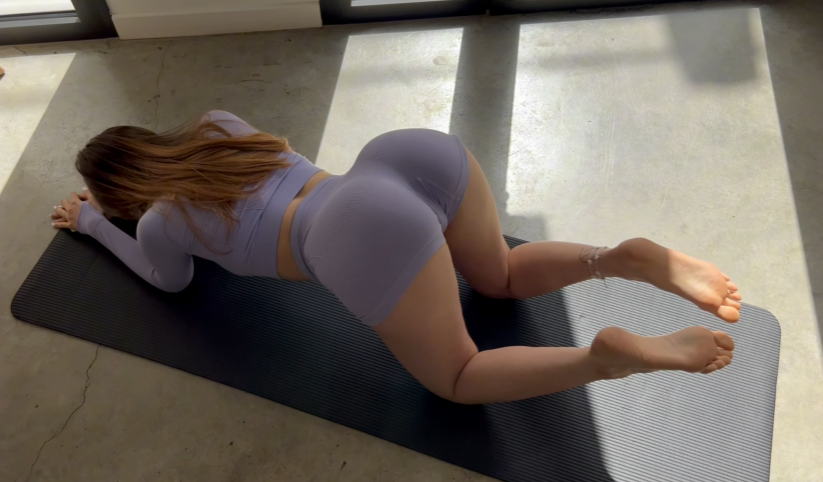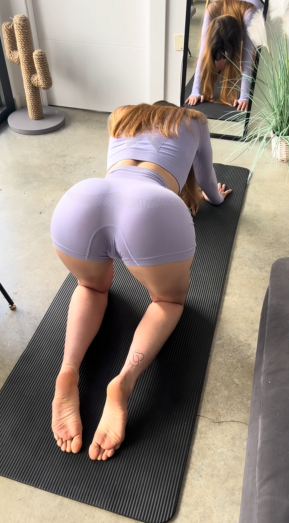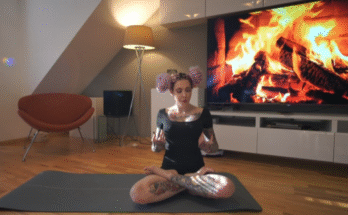
In today’s fast-paced world, stress, stiffness, and tension can quietly build up in our bodies. Whether you sit at a desk all day or feel worn down from daily tasks, your body craves movement and release. One of the gentlest and most effective ways to relax, improve posture, and support spine health is through calming arch stretching — especially designed for beginners.
What is Arch Stretching?
Arch stretching refers to poses and movements that involve gentle backbending or arching of the spine. These stretches help open the chest, lengthen the abdominal muscles, activate the spine, and relieve tightness in the back and shoulders. They also promote deep breathing and a sense of openness, both physically and emotionally.
For beginners, calming arch stretches are simple, safe, and require no special equipment — just a soft mat and a few minutes of your time.
Benefits of Calming Arch Stretches
Before diving into the routine, here are some of the key benefits of arch stretching:
- Improves posture by strengthening and opening the back and shoulders.
- Releases tension in the spine, neck, and chest.
- Stimulates deep breathing and helps calm the nervous system.
- Increases flexibility in the hips, spine, and core.
- Relieves mild back pain caused by poor posture or prolonged sitting.
- Boosts energy by opening the heart and improving circulation.

Preparations
- Time: Set aside 10–20 minutes.
- Space: Use a quiet, clean space with a yoga mat or towel.
- Breathing: Focus on slow, deep breaths throughout the session.
- Attire: Wear comfortable, stretchy clothes.
Beginner-Friendly Calming Arch Stretch Routine
Let’s begin with a series of six beginner-friendly arch stretches. These movements are gentle, restorative, and calming — perfect for mornings, evenings, or anytime you need to reset.
1. Seated Heart Opener (1–2 minutes)
How to do it:
- Sit cross-legged on the mat.
- Interlace your fingers behind your back and straighten your arms.
- Gently lift your chest and pull your shoulder blades together, arching your upper back.
- Tilt your chin slightly upward and breathe deeply.
Why it helps:
This stretch opens the chest and shoulders while creating a light arch in the upper back. It’s great for counteracting slouched posture.
2. Cat-Cow Stretch (2–3 minutes)
How to do it:
- Come onto your hands and knees in a tabletop position.
- As you inhale, drop your belly, lift your tailbone and chest — this is Cow Pose.
- As you exhale, round your spine, tuck your chin and tailbone — this is Cat Pose.
- Move slowly with your breath, repeating the cycle for 1–2 minutes.
Why it helps:
This dynamic stretch gently warms up the spine and promotes flexibility while also calming the nervous system.

3. Sphinx Pose (2 minutes)
How to do it:
- Lie on your stomach with legs extended and elbows under your shoulders.
- Press your forearms down and lift your chest without straining the lower back.
- Keep your hips grounded and neck relaxed.
- Hold the pose for 1–2 minutes, breathing deeply.
Why it helps:
This beginner-friendly backbend strengthens the spine and opens the front body without putting too much pressure on the lower back.
4. Bridge Pose (2–3 minutes)
How to do it:
- Lie on your back with knees bent, feet hip-width apart and close to your sitting bones.
- Press into your feet and lift your hips gently off the ground.
- Clasp your hands under your back, roll your shoulders underneath, and lift your chest.
- Hold for 30 seconds to 1 minute, then gently lower.
- Repeat 2–3 times.
Why it helps:
Bridge pose is a classic calming arch that energizes the spine, tones the legs and core, and opens the heart area.
5. Supported Fish Pose (3 minutes)
How to do it:
- Place a folded blanket or pillow lengthwise under your upper back and head.
- Lie back so your chest gently opens, arms relaxed at your sides, palms up.
- Keep legs extended or bent with feet on the floor.
- Let your breath deepen and stay here for up to 3 minutes.
Why it helps:
This restorative stretch promotes deep relaxation while softly arching the spine and opening the chest.

6. Child’s Pose (2–3 minutes)
How to do it:
- From kneeling, lower your torso between your thighs.
- Stretch your arms forward or rest them beside your body.
- Let your forehead rest on the mat.
- Breathe deeply and feel your back gently stretch and relax.
Why it helps:
Though not an arch, Child’s Pose helps balance the body after backbends, calming the nervous system and releasing the spine.
Breathing Tips for Calm and Focus
Throughout the practice, pair each movement with conscious breathing:
- Inhale as you open or arch the chest.
- Exhale as you release or return to neutral.
- Try 4-count breathing: inhale for 4 seconds, exhale for 4 seconds.
- If thoughts distract you, gently return your focus to your breath.

Safety and Modifications
- Listen to your body. Never push into pain — a stretch should feel relieving, not painful.
- Use props like yoga blocks, bolsters, or cushions if you need support.
- If you have a history of spinal injuries, consult a healthcare provider or physical therapist before starting a backbend-focused routine.
- Avoid holding your breath or moving too fast.
Ending Your Practice
After completing the stretch routine, lie on your back in Savasana (relaxed lying down pose) for 2–5 minutes. Let your body integrate the effects of your practice. Feel the calm, space, and lightness you’ve created.
Final Thoughts
Calming arch stretching is not about how deep you can bend — it’s about how gently you can care for your body and mind. By practicing just a few minutes each day, you’ll begin to notice improvements in flexibility, posture, and emotional well-being. Over time, these simple movements can become a peaceful ritual in your routine — a way to reset, reconnect, and restore.
Start slow, stay consistent, and most importantly — enjoy the process. Your body will thank you.



